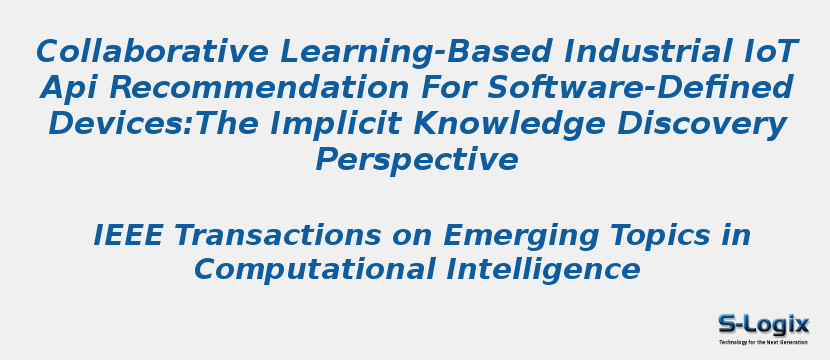Research Area: Internet of Things
The industrial Internet of things (IIoT), a new computing mode in Industry 4.0, is deployed to connect IoT devices and use communication technology to respond to control commands and handle industrial data. IIoT is typically employed to improve the efficiency of computing and sensing and can be used in many scenarios, such as intelligent manufacturing and video surveillance. To build an IIoT system, we need a collection of software to manage and monitor each system component when there are large-scale devices. Application programming interface (API) is an effective way to invoke public services provided by different platforms. Developers can invoke different APIs to operate IoT devices without knowing the implementation process. We can design a workflow to configure how and when to invoke target APIs. Thus, APIs are a powerful tool for rapidly developing industrial systems. However, the increasing number of APIs exacerbates the problem of finding suitable APIs. Current related recommendation methods have defects. For example, most existing methods focus on the relation between users and APIs but neglect the valuable relations among the users or APIs themselves. To address these problems, this article studies implicit knowledge in IIoT by using collaborative learning techniques. Considering the increased dimensions and dynamics of IoT devices, we explore the possible relationships between users and between APIs. We enhance the matrix factorization (MF) model with the mined implicit knowledge that are implicit relationships on both sides. We build an ensemble model by using all implicit knowledge. We conduct experiments on a collected real-world dataset and simulate industrial system scenarios. The experimental results verify the effectiveness and superiority of the proposed models.
Keywords:
Author(s) Name: Honghao Gao; Xi Qin; Ramón J. Durán Barroso; Walayat Hussain; Yueshen Xu; Yuyu Yin
Journal name: IEEE Transactions on Emerging Topics in Computational Intelligence
Conferrence name:
Publisher name: IEEE
DOI: 10.1109/TETCI.2020.3023155
Volume Information: ( Volume: 6, Issue: 1, Feb. 2022) Page(s): 66 - 76
